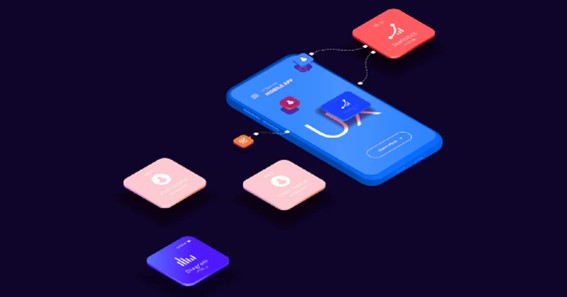The evolution of accessibility has transformed it from a mere consideration and a symbol of good practice into an essential human right and a legal obligation. Notably, there has been a significant rise in the number of web accessibility lawsuits in recent years, emphasizing the growing importance of ensuring equal access to digital content.
It’s important to clarify that inclusivity and accessibility are often misconstrued as interchangeable terms. In reality, inclusivity encompasses a broader concept that extends beyond accessibility. According to a survey conducted by the W3C, the global standards organization for the World Wide Web, 71% of web accessibility issues are related to design choices rather than technical limitations. This highlights the need for inclusive web design principles that go beyond mere compliance with accessibility standards.
What is inclusive web design?
Inclusive web design embodies the understanding of diverse user needs and the creation of user experiences that cater to them. Rather than focusing solely on a familiar majority, designers aim for comprehensive accessibility for everyone. They take into account a range of factors, including situational, temporary, and permanent limitations that may hinder certain groups from using a product. Inclusive design goes beyond avoiding biases based on race, age, gender, and similar factors.
At the heart of inclusive web design are the principles of diversity, equity, and inclusion. It is crucial to expand the reach of products and services to encompass broader user groups across different settings. This may involve updating stock photos to ensure representation and diversity, diversifying the content mix to appeal to a wider audience, offering multi-lingual support to accommodate language preferences, and staying attuned to sensitive topics and emerging trends.
By embracing the ethos of inclusive web design, we foster an environment that celebrates diversity, promotes equality, and encourages a sense of belonging for all users. This approach not only enhances user experiences but also reflects a commitment to social responsibility and inclusivity in the digital realm. As we strive for inclusivity, we create a more equitable online landscape that respects the needs and perspectives of diverse individuals and communities.
Inclusive vs accessible design
Recognizing the distinction between accessibility and inclusivity in web design is vital due to the underlying philosophies of both principles. While accessibility can be achieved within the framework of inclusivity, focusing solely on accessibility falls short of achieving true inclusivity.
Accessibility primarily addresses permanent factors, such as physical disabilities, ensuring that individuals with disabilities can access and use digital products. On the other hand, inclusivity goes beyond accessibility by encompassing situational and temporary factors, such as language barriers, cultural backgrounds, or region-specific technical considerations.
The limitations, constraints, and disabilities may be permanent, situational, or temporary. It is possible to outline five core groups of these limitations:
– Dexterity
– Visual
– Hearing
– Cognitive
– Speech
For instance, a visual disability can be either permanent, such as from birth, or temporary, like a temporary loss of vision due to an accident. It can also be situational, such as working or living conditions affecting visual ability. Inclusive web/mobile app development requires addressing all forms of limitations to cater to diverse user needs.
Web designers must approach each situation and condition individually, avoiding generalizations. An example of inclusive design is ensuring that a video automatically pauses when a user disconnects their earbuds, considering situational limitations. By incorporating such considerations, designers can create more inclusive digital experiences that accommodate a wider range of user abilities and circumstances.
Inclusive design principles during the development process
Creating a website with a focus on inclusivity and accessibility from the start is always preferable to retrofitting these considerations into an existing product. By incorporating inclusive design principles throughout the development process, the final solution’s quality is significantly improved. While these principles may seem intuitive, their structured implementation brings significant value.
Structuring content
Breaking down content into smaller sections with clear headers enhances visibility. The contrast between content and its background is crucial for accessibility. Additionally, keeping content lines to around 80 characters and maintaining a line-height of 1.5 times the font size improves readability. Avoiding fully justified text is also important for accessibility.
Utilizing proper markup
Implementing heading tags in the website’s backend supports content structure and improves search engine functionality. Screen readers can provide context to visually impaired users, enhancing their browsing experience.
Supporting keyboard navigation
Keyboard support is essential for users with motor skill or vision impairments who rely on keyboard navigation. Enabling website navigation using a single key, such as the “Tab” key, is a common approach to ensure accessibility.
Designing clear focus states
Designing usable focus states helps highlight buttons during navigation using the tab key or when hovering a mouse over them. Clearly indicating which element is currently in focus is crucial for users who rely on keyboard navigation.
Click here – Buying Amanita Gummies Online: Tips for a Safe and Reliable Purchase
Providing descriptive alt text for images
Including descriptive alternative text (alt text) for images is essential for web page readers. Users with impairments can benefit greatly from detailed descriptions of images to understand their context.
Avoiding text within images
Text embedded within images can be challenging to read due to resizing and other web page properties. Avoiding text within images ensures accessibility for users with impairments.
Using descriptive labels for form fields
Form fields should have separate descriptive labels rather than relying solely on gray text within the input boxes, which disappears when users start inputting information. Clear labels aid users with impairments in understanding the purpose of each form field.
Eliminating flashing UI animations
Flashing animations can trigger health conditions like epilepsy. To ensure inclusivity, it is crucial to avoid such animations that may pose a risk to users with sensitivities or conditions related to visual stimuli.
By implementing these considerations, web designers can create websites that are more inclusive, accessible, and user-friendly, accommodating a broader range of users with diverse needs and abilities.






